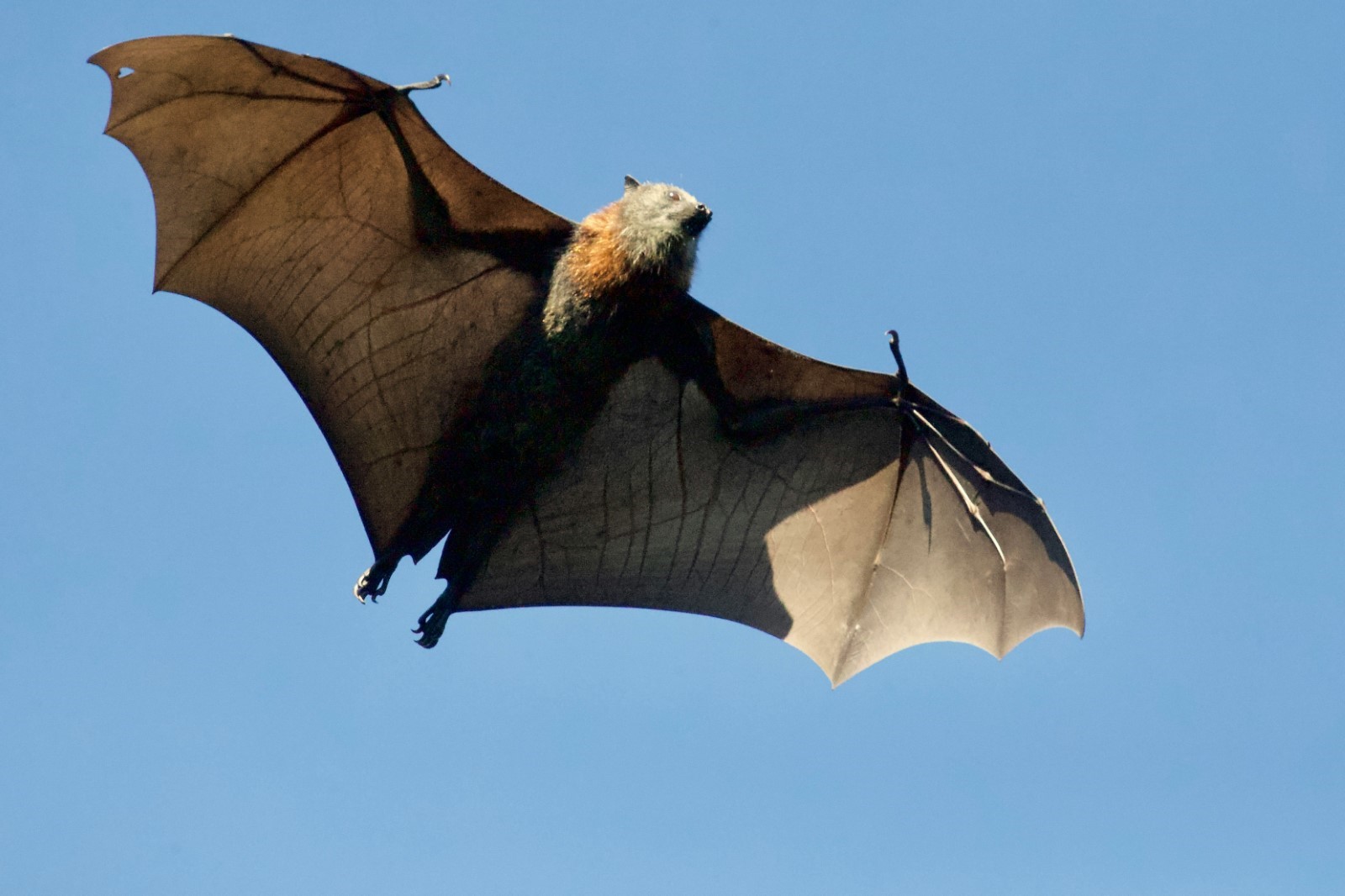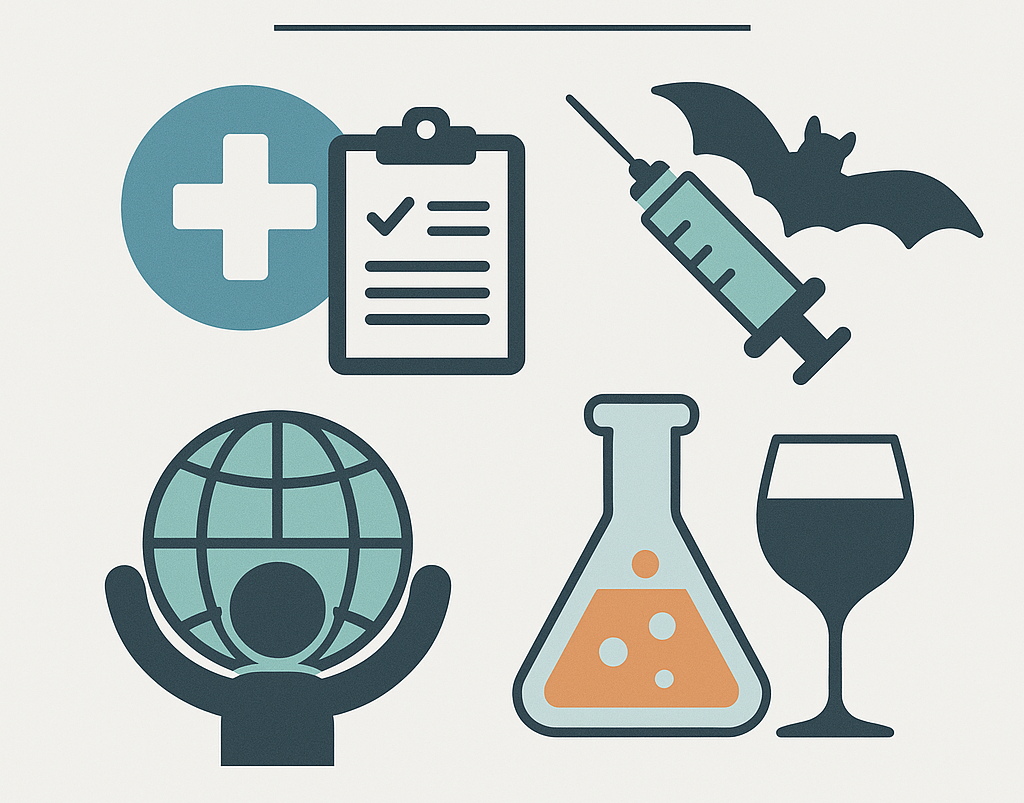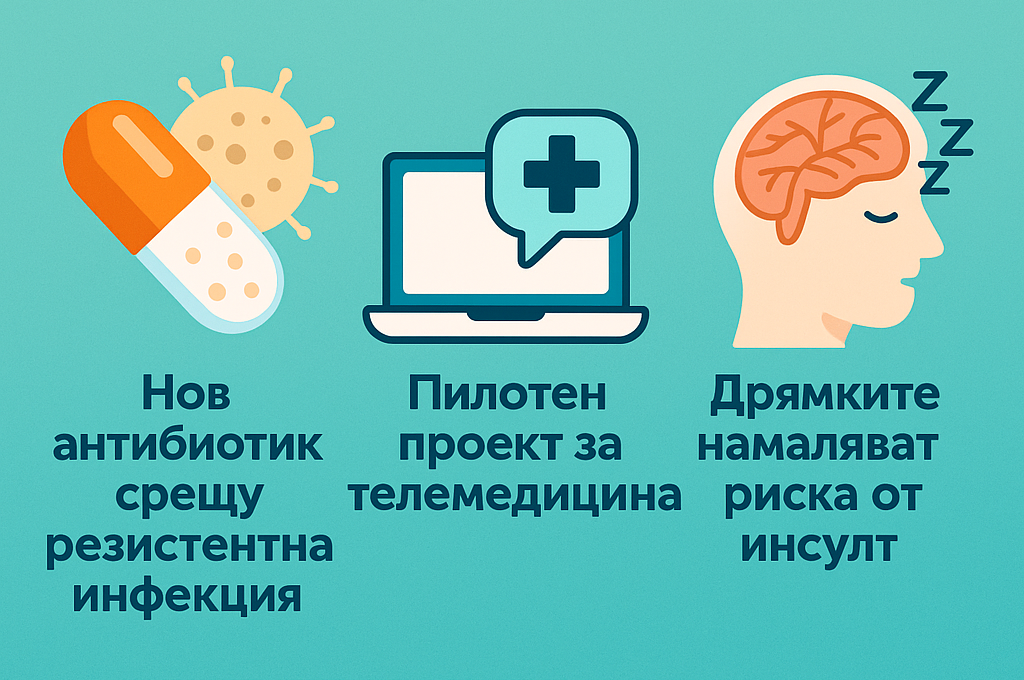Latest events and discoveries - Drugs, alcohol and more...
In the following lines, we will learn about some news from the past several days and weeks and their development to the present moment. We will learn about new outbreaks of diseases that for years were considered eradicated, as well as diseases that emerged recently.

Measles Outbreak in the US
In the midst of alarming headlines, a measles outbreak has appeared in the United States – the largest in recent years. Nearly 100 people – mainly children – became ill in parts of Texas and neighboring New Mexico. Only in parts of Texas and neighboring New Mexico, nearly 100 people—mainly children—have fallen ill with the highly contagious viral infection (measles has a high level of contagiousness). Health authorities warn that the number of infected individuals is likely to continue rising.
We from DrGoGo remind that measles is not a harmless "childhood rash," and it can proceed seriously with pneumonia, encephalitis (an inflammatory disease of the brain), and even death. This alarming statistic is a reminder that even diseases thought to have disappeared can return, emphasizing the importance of vaccination.

A New Coronavirus Found in Bats
Scientists in Guangdong province, China, have identified a new coronavirus from bats, designated HKU5-CoV-2, which is capable of infecting human cells. It uses the same receptor (ACE2) to enter cells, just like SARS-CoV-2 (the virus causing the 2020 pandemic), but is believed to be less pathogenic.
The discovery of this virus has led to fears that it could potentially cause a new pandemic in the future if conditions become favorable. International healthcare institutions, including the WHO, have intensified surveillance and early response systems for zoonotic viruses (viruses jumping from animals to humans).

Positive Trends in Opioid Crisis
Amid worrying news, a positive trend entered headlines: overdose deaths in the USA have decreased. According to data, deaths from drug overdoses have decreased, especially deaths involving synthetic opioids such as fentanyl – still a major killer, but this reduction is encouraging.
This trend is attributed to several factors: increased access to naloxone (an antidote for opioid overdoses), drug treatment programs, tighter control of drug distribution, and other public health policies. While the crisis remains serious, these developments show that public health policies and education can save thousands of lives.

Alcohol Consumption and Cancer Risk
A new study from the World Health Organization (WHO) highlights that alcohol consumption causes approximately 800,000 deaths annually in Europe. Despite this alarming statistic, awareness of the connection between alcohol and cancer remains low:
-
Only 39% of people know that alcohol consumption can cause colorectal cancer.
-
Just 15% realize alcohol increases the risk of breast cancer.
The WHO describes this knowledge gap as troubling and calls for legislative changes in Europe to mandate clearer labeling of alcohol bottles regarding cancer risks. Currently, very few countries have such requirements.
The conclusion from this news is clear: informed choices are crucial, and even moderate alcohol consumption carries risks.

Final Thoughts
In the above lines, we shared some interesting and important facts from the field of healthcare news. The aim is to inspire reflection on the fragility of our health and the necessity to make wise choices, both for ourselves and for our children. Stay informed, stay healthy, and make wise choices for your well-being.
Sources:
Tahir IM, Kumar V, Faisal H, Gill A, Kumari V, Tahir HM, Haque MA. Contagion comeback: unravelling the measles outbreak across the USA. Front Public Health. 2024 Dec 18;12:1491927. doi: 10.3389/fpubh.2024.1491927. PMID: 39744360; PMCID: PMC11688273.
Pereira MR. Measles outbreak in the United States. Am J Transplant. 2024 May;24(5):708. doi: 10.1016/j.ajt.2024.03.014. Epub 2024 Mar 16. PMID: 38499088.
Chen J, Zhang W, Li Y, Liu C, Dong T, Chen H, Wu C, Su J, Li B, Zhang W, Hu B, Jia J, Ma CB, Zhu Y, He X, Li A, Pan K, Lin H, Guo Z, Li C, Zhang L, Yan H, Zhou P, Peng W, Shi ZL. Bat-infecting merbecovirus HKU5-CoV lineage 2 can use human ACE2 as a cell entry receptor. Cell. 2025 Feb 12:S0092-8674(25)00144-8. doi: 10.1016/j.cell.2025.01.042. Epub ahead of print. PMID: 39970913.
Park YJ, Liu C, Lee J, Brown JT, Ma CB, Liu P, Gen R, Xiong Q, Zepeda SK, Stewart C, Addetia A, Craig CJ, Tortorici MA, Alshukairi AN, Starr TN, Yan H, Veesler D. Molecular basis of convergent evolution of ACE2 receptor utilization among HKU5 coronaviruses. Cell. 2025 Feb 7:S0092-8674(24)01475-2. doi: 10.1016/j.cell.2024.12.032. Epub ahead of print. PMID: 39922192.
Park YJ, Liu C, Lee J, Brown JT, Ma CB, Liu P, Xiong Q, Stewart C, Addetia A, Craig CJ, Tortorici MA, Alshukari A, Starr T, Yan H, Veesler D. Molecular basis of convergent evolution of ACE2 receptor utilization among HKU5 coronaviruses. bioRxiv [Preprint]. 2024 Aug 28:2024.08.28.608351. doi: 10.1101/2024.08.28.608351. Update in: Cell. 2025 Feb 7:S0092-8674(24)01475-2. doi: 10.1016/j.cell.2024.12.032. PMID: 39253417; PMCID: PMC11383307.
Catanzaro NJ, Wu Z, Fan C, Schäfer A, Yount BL, Bjorkman PJ, Baric R, Letko M. ACE2 from Pipistrellus abramus bats is a receptor for HKU5 coronaviruses. bioRxiv [Preprint]. 2024 Aug 16:2024.03.13.584892. doi: 10.1101/2024.03.13.584892. PMID: 38559009; PMCID: PMC10980018.
HEALing Communities Study Consortium; Samet JH, El-Bassel N, Winhusen TJ, Jackson RD, Oga EA, Chandler RK, Villani J, Freisthler B, Adams J, Aldridge A, Angerame A, Babineau DC, Bagley SM, Baker TJ, Balvanz P, Barbosa C, Barocas J, Battaglia TA, Beard DD, Beers D, Blevins D, Bove N, Bridden C, Brown JL, Bush HM, Bush JL, Caldwell R, Calver K, Calvert D, Campbell ANC, Carpenter J, Caspar R, Chassler D, Chaya J, Cheng DM, Cunningham CO, Dasgupta A, David JL, Davis A, Dean T, Drainoni ML, Eggleston B, Fanucchi LC, Feaster DJ, Fernandez S, Figueroa W, Freedman DA, Freeman PR, Freiermuth CE, Friedlander E, Gelberg KH, Gibson EB, Gilbert L, Glasgow L, Goddard-Eckrich DA, Gomori S, Gruss DE, Gulley J, Gutnick D, Hall ME, Harger Dykes N, Hargrove SL, Harlow K, Harris A, Harris D, Helme DW, Holloway J, Hotchkiss J, Huang T, Huerta TR, Hunt T, Hyder A, Ingram VL, Ingram T, Kauffman E, Kimball JL, Kinnard EN, Knott C, Knudsen HK, Konstan MW, Kosakowski S, Larochelle MR, Leaver HM, LeBaron PA, Lefebvre RC, Levin FR, Lewis N, Lewis N, Lofwall MR, Lounsbury DW, Luster JE, Lyons MS, Mack A, Marks KR, Marquesano S, Mauk R, McAlearney AS, McConnell K, McGladrey ML, McMullan J, Miles J, Munoz Lopez R, Nelson A, Neufeld JL, Newman L, Nguyen TQ, Nunes EV, Oller DA, Oser CB, Oyler DR, Pagnano S, Parran TV, Powell J, Powers K, Ralston W 3rd, Ramsey K, Rapkin BD, Reynolds JG, Roberts MF, Robertson W, Rock P, Rodgers E, Rodriguez S, Rudorf M, Ryan S, Salsberry P, Salvage M, Sabounchi N, Saucier M, Savitzky C, Schackman B, Schady E, Seiber EE, Shadwick A, Shoben A, Slater MD, Slavova S, Speer D, Sprunger J, Starbird LE, Staton M, Stein MD, Stevens-Watkins DJ, Stopka TJ, Sullivan A, Surratt HL, Sword Cruz R, Talbert JC, Taylor JL, Thompson KL, Vandergrift N, Vickers-Smith RA, Vietze DJ, Walker DM, Walley AY, Walters ST, Weiss R, Westgate PM, Wu E, Young AM, Zarkin GA, Walsh SL. Community-Based Cluster-Randomized Trial to Reduce Opioid Overdose Deaths. N Engl J Med. 2024 Sep 19;391(11):989-1001. doi: 10.1056/NEJMoa2401177. Epub 2024 Jun 16. PMID: 38884347; PMCID: PMC11761538.
Behrends CN, Leff JA, Lowry W, Li JM, Onuoha EN, Fardone E, Bayoumi AM, McCollister KE, Murphy SM, Schackman BR. Economic Evaluations of Establishing Opioid Overdose Prevention Centers in 12 North American Cities: A Systematic Review. Value Health. 2024 May;27(5):655-669. doi: 10.1016/j.jval.2024.02.004. Epub 2024 Feb 22. PMID: 38401795; PMCID: PMC11069439.
Fanfarillo F, Caronti B, Lucarelli M, Francati S, Tarani L, Ceccanti M, Piccioni MG, Verdone L, Caserta M, Venditti S, Ferraguti G, Fiore M. Alcohol Consumption and Breast and Ovarian Cancer Development: Molecular Pathways and Mechanisms. Curr Issues Mol Biol. 2024 Dec 20;46(12):14438-14452. doi: 10.3390/cimb46120866. PMID: 39727994; PMCID: PMC11674816.





Comments